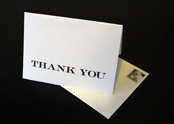Your day-to-day business writing could be – should be – your most cost-effective marketing tool, no matter what you’re writing. And you don’t have to be a marketing expert to use it this way!
First, ask yourself why you are writing. To inform? To persuade? No, really. Think about it. Much of the regular, routine information you pass along has a job to do, in addition to providing that information. When you provide the information, how do you want your reader to think about your organization? About you? Isn’t there a bit of persuasion there?
 “They seem to know what they’re doing,” might be one desirable judgment. “They sound like they’re easy to work with,” another. If, after reading your written communication, your reader were asked, “What do you think about (your organization)?” what do you want him or her to say? Isn’t there a bit of persuasion there?
“They seem to know what they’re doing,” might be one desirable judgment. “They sound like they’re easy to work with,” another. If, after reading your written communication, your reader were asked, “What do you think about (your organization)?” what do you want him or her to say? Isn’t there a bit of persuasion there?
So how do you write so that you get those opinions?
- Remember the most critical issue of all: If your reader doesn’t “get it” quickly, without spending some time with it, if your reader doesn’t “get it at a glance,” he or she may well decide you don’t know what you’re talking about!
- Where to start: Begin with the old basics: correct spelling; grammar: punctuation, sentence structure and all the rest; and of course, that secret strategy: tone, the relationship the writer sets up with the reader. Miss out on any of these, and it’s possible your reader may see you as somewhat careless, not quite so knowledgeable, and maybe not taking as much care as he or she might like you to do.
- Think about your reader. What is the best way to provide this information to him or to her? In person? On the phone? In writing – online, on paper? By a webinar, teleseminar, or in-person workshop? Through social media, or your own blog site, or comments on other blog sites?
- Think carefully about why you are writing. What is the result you want to achieve? To provide clear, accurate information to your reader? To persuade him or her to approve your proposal? To get that person to follow a new procedure?
What is the relationship your writing – if you decide the written word is the way to go – must set up with the reader? How will you word your piece? Then – it works best if you can give it a bit of time first – re-read your finished product, and ask yourself, “If I were the reader, how would I react (feel)? How would I respond (what would I be likely to do)?” And of course, “What questions would I have?”
Next time, we’ll talk about some of the words and phrases you might use to prove your case. See you then!
To receive your Business Writing Trends automatically every week, please subscribe to our newsletter.
We’ll be happy to come to your organization. To discuss a workshop for your people at your location, or a shorter presentation for an upcoming meeting, email us at gail@gailtycer.com or give us a call at 503/292-9681.





